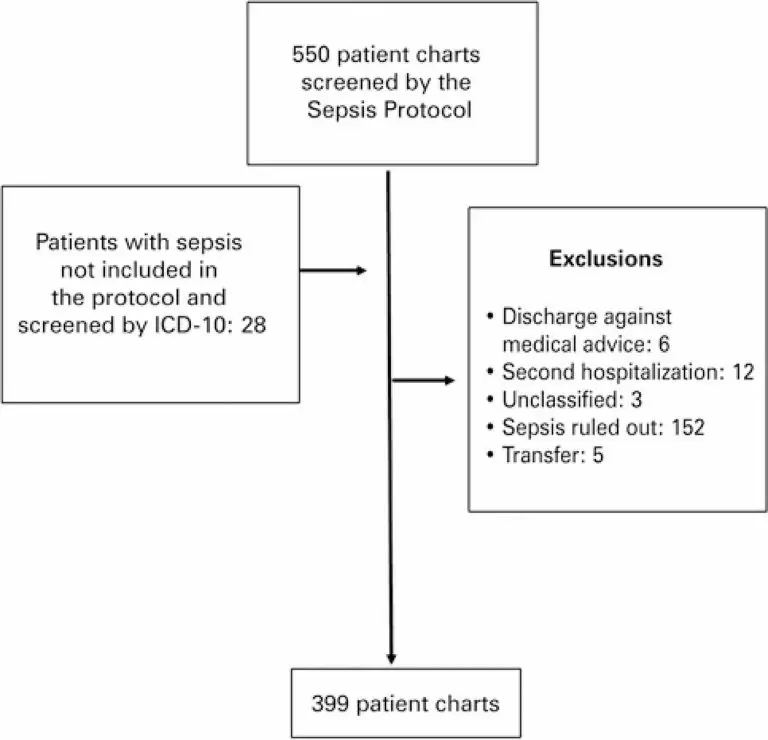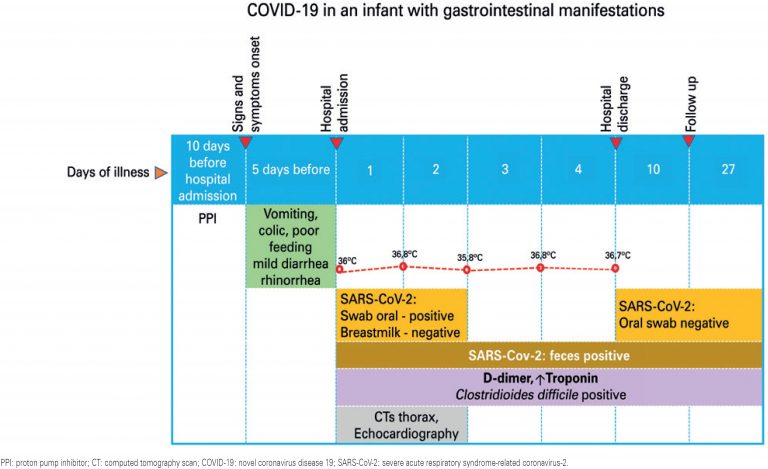31/Oct/2025
Determinants of invasive ventilation in infants with acute bronchiolitis: an observational study of pre-hospital and in-hospital treatments
DOI: 10.31744/einstein_journal/2025AO1512
Highlights ■ This single-center study evaluated the frequency and factors associated with invasive ventilation in infants with acute viral bronchiolitis on a pediatric ward. ■ The study revealed an invasive ventilation rate of 6%, associated with age, presence of atelectasis, and Wood-Downes-Ferres score at admission. ■ Many interventions with poor scientific evidence were used. ■ This study highlights the need to implement clinical protocols for the management of acute viral bronchiolitis, including all levels of care, as these infants are […]
Keywords: Bronchiolitis; Bronchodilator agents; Child; Epidemiology; Hospitalization; Infant; Intubation; Pulmonary atelectasis
07/Apr/2025
Moebius Syndrome associated with syringomyelia: a case report
DOI: 10.31744/einstein_journal/2025RC0876
ABSTRACT Moebius Syndrome is a genetic condition that results in inability for facial mimicry due to palsy of cranial nerves VI and VII. Syringomyelia is characterized by a dilation of the central canal in the spinal cord, and is generally asymptomatic. Both disorders are diagnosed using imaging tests. A newborn with no facial movements upon physical examination was admitted to the delivery room of our hospital. A specialist confirmed the condition to be Moebius Syndrome. Further investigation using magnetic resonance […]
Keywords: Facial paralysis; Infant; Moebius Syndrome; Newborn; Syringomyelia
09/Apr/2024
The impact of a biocellulose-based repair of fetal open spina bifida on the need to untether the cord: is it time to unify techniques for prenatal repair?
einstein (São Paulo). 09/Apr/2024;22:eAO0557.
View Article09/Apr/2024
The impact of a biocellulose-based repair of fetal open spina bifida on the need to untether the cord: is it time to unify techniques for prenatal repair?
DOI: 10.31744/einstein_journal/2024AO0557
Highlights This study focused on a prenatal biocellulose-based repair technique for open spina bifida that was performed at a later gestational age (26–28 weeks). Myelomeningocele repair involves placode and myofascial flap dissections, with the placement of a biocellulose patch that contributes to successful outcomes, by inducing the formation of a neodurameter. Only 4.4% of patients required cord untethering, indicating a notably low rate of tethered cord syndrome associated with the procedure, especially when compared with other prenatal myelomeningocele-correction techniques. The […]
Keywords: Cellulose; Fetoscopy; Fetus/surgery; Infant; Motor activity; Newborn; Spinal dysraphism
21/Nov/2022
Antibiotic prophylaxis in pregnant with premature rupture of ovular membranes: systematic review and meta-analysis
einstein (São Paulo). 21/Nov/2022;20:eRW0015.
View Article21/Nov/2022
Antibiotic prophylaxis in pregnant with premature rupture of ovular membranes: systematic review and meta-analysis
DOI: 10.31744/einstein_journal/2022RW0015
ABSTRACT Objective To perform a systematic review and meta-analysis of randomized clinical trials that compared the use of antibiotics versus placebo in premature rupture of membranes preterm and evaluated maternal, fetal and neonatal outcomes in pregnant women with premature rupture of ovular membranes at a gestational age between 24 and 37 weeks. Methods A search was conducted using keywords in PubMed, Cochrane, Biblioteca Virtual em Saúde and Biblioteca Digital de Teses e Dissertações da USP between August 2018 and December […]
Keywords: Anti-bacterial agents; Antibiotic prophylaxis; Fetal membranes; Gestational age; Infant; Pregnant Women; Premature; premature rupture
23/Feb/2022
Epidemiology and treatment of sepsis at a public pediatric emergency department
DOI: 10.31744/einstein_journal/2022AO6131
ABSTRACT Objective To describe the clinical characteristics and treatment of children with sepsis, severe sepsis, and septic shock at a pediatric emergency department of a public hospital. Methods A retrospective, observational study. The medical records of patients included in the hospital Pediatric Sepsis Protocol and patients with discharge ICD-10 A41.9 (sepsis, unspecified), R57 (shock) and A39 (meningococcal meningitis) were evaluated. Results A total of 399 patients were included. The prevalence of sepsis, severe sepsis, and septic shock at the emergency […]
Keywords: Child; Emergency medical services; Epidemiology; Infant; International Classification of Diseases; Length of stay; Patient discharge; Sepsis; Shock, septic
25/Aug/2021
Ultra-processed foods consumption among children and associated socioeconomic and demographic factors
DOI: 10.31744/einstein_journal/2021AO5554
ABSTRACT Objective To evaluate the consumption of ultra-processed foods among children, and to investigate associations with socioeconomic and demographic factors. Methods An analytical cross-sectional study with 599 children aged 6 months to 2 years, and listed as users of Family Health Units, in a medium-size city. Mothers were approached at home by researchers and community health workers from the Family Health Units, for data collection. Two questionnaires were used: the socioeconomic and demographic questionnaire, and the form Sistema de Vigilância […]
Keywords: Family health strategy; Infant; Infant nutrition; Infant nutritional physiological phenomena
26/Nov/2020
COVID-19 and coinfection with Clostridioides ( Clostridium ) difficile in an infant with gastrointestinal manifestation
DOI: 10.31744/einstein_journal/2020RC6048
ABSTRACT We report the clinical case of an infant with severe acute respiratory syndrome coronavirus 2 (SARS-CoV-2) infection with gastrointestinal signs and symptoms, predominantly vomiting. The patient also had colic, poor feeding, mild diarrhea and mild rhinorrhea without fever. The child had evidence of altered coagulation, increased interleukin 10, moderate dehydration and she was admitted to the pediatric intensive care unit. Simultaneously, the patient was diagnosed as Clostridioides difficile infection, which possibly may have facilitated the persistence of SARS-CoV-2 in […]
Keywords: Coinfection; Coronavirus infections; Gastrointestinal tract; Infant
13/May/2019
Introduction of complementary foods in infants
DOI: 10.31744/einstein_journal/2019AO4412
ABSTRACT Objective: To analyze frequency, age and time trend of complementary feeding introduction in infants. Methods: Retrospective study of infants’ data evaluated at nutrition sector of Programa de Atenção aos Bebês of Programa Einstein na Comunidade de Paraisópolis from 2012 to 2015. Survival analyzes were performed, and the outcome considered was the time until the introduction of each specific food. Results: Participants were 700 infants, with 5.5 months of median age. Water was the most consumed supplement (80.0%), followed by […]
Keywords: Child health services; Infant; Infant nutrition; Supplementary feeding
01/Jul/2016
Frequency and risk factors for the birth of small-for-gestational-age newborns in a public maternity hospital
DOI: 10.1590/S1679-45082016AO3684
ABSTRACT Objective: To determine the frequency and risk factors of small-for-gestational-age newborns in a high-risk maternity. Methods: This is an observational, cross-sectional, and case-control study, conducted in a public tertiary care maternity hospital. Data from 998 newborns and their mothers were collected through interviews and review of medical records and prenatal care cards. Some placentas underwent histopathological analysis. The variables of small-for-gestational-age and non-small-for-gestational-age newborns and of their mothers were statistically compared by means of Student’s t test, Fisher’s exact […]
Keywords: Birth weight; Fetal growth retardation; Infant; Morbidity; Newborn; Risk Factors
01/Jan/2015
Perinatal ischemic stroke: a five-year retrospective study in a level-III maternity
DOI: 10.1590/S1679-45082015AO3056
Objective To study the incidence, clinical presentation, risk factors, imaging diagnosis, and clinical outcome of perinatal stroke. Methods Data was retrospectively collected from full-term newborns admitted to the neonatal unit of a level III maternity in Lisbon with cerebral stroke, from January 2007 to December 2011. Results There were 11 cases of stroke: nine were arterial ischemic stroke and two were cerebral venous sinus thrombosis. We estimated an incidence of arterial ischemic stroke of 1.6/5,000 births and of cerebral venous […]
Keywords: Infant; Infant, Newborn; Risk Factors; Seizures; Stroke/complications








